Yearning to understand your deepest fears? Dive into the intricate interplay of psychological and biological factors shaping our phobias.
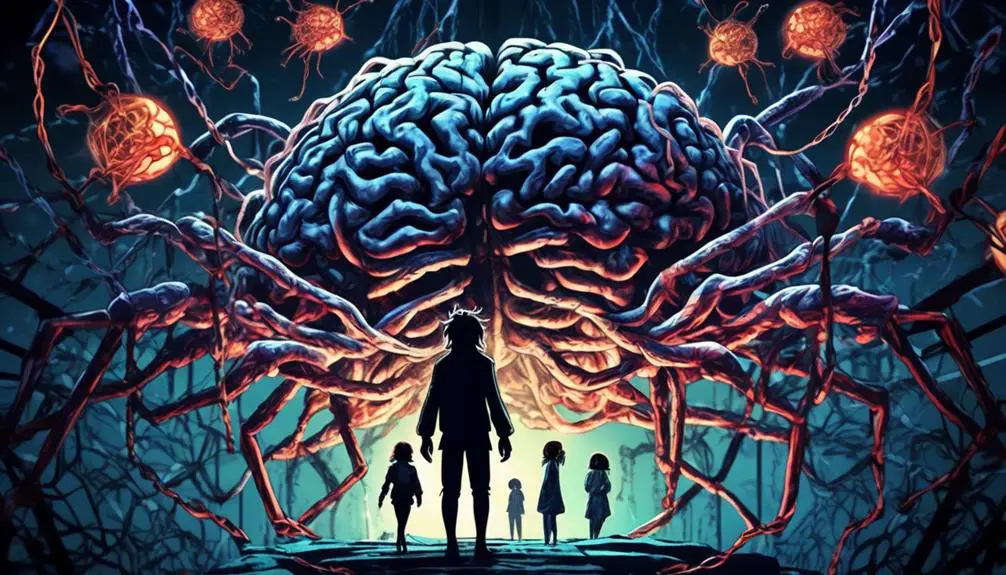
Psychological and Biological Factors in Phobias
Imagine you're a knight battling a dragon, only the dragon is a tiny spider and your castle is your everyday life. Phobias, irrational and intense fears, can feel just like that. They're not just products of your imagination, but complex interplays between your psychological state and biological makeup.
You might wonder, what factors contribute to these overpowering fears? Is it purely psychological, born from traumatic experiences, or is it something encoded in your genes? Or perhaps it's a mixture of both? The answers are not as straightforward as you might think, and that's exactly why we need to delve deeper into the fascinating labyrinth of phobias.
Key Takeaways
- Phobias are highly prevalent, with approximately 12.5% of U.S. adults experiencing a specific phobia in their lifetime.
- Phobias can develop at any age, but onset typically occurs in childhood or adolescence.
- Psychological theories, such as Fear Conditioning and Phobia Reinforcement, help explain the development and persistence of phobias.
- Genetic factors, along with environmental influences and personal experiences, contribute to the formation of phobias.
Understanding Phobias: An Overview
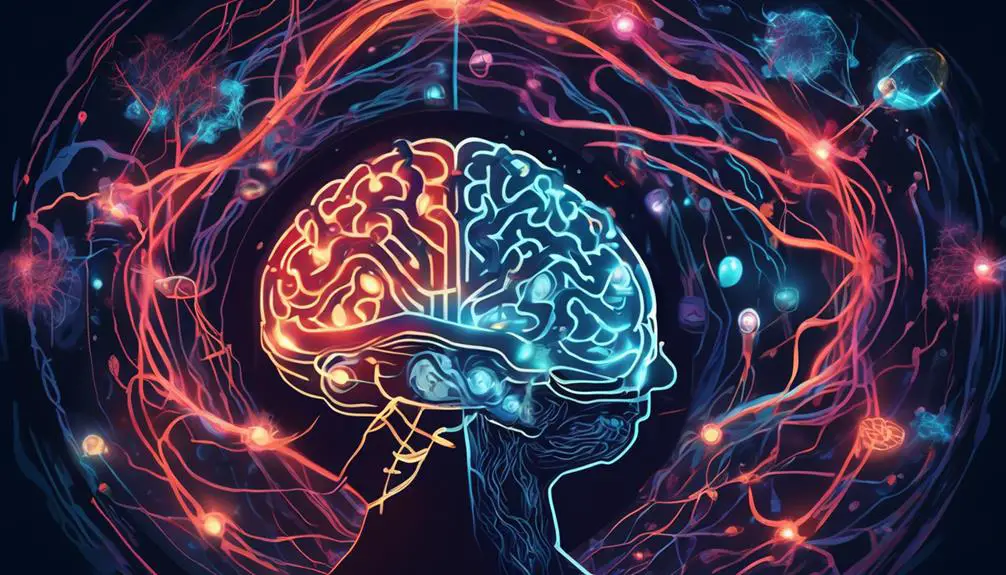
Often, you might find yourself inexplicably scared of certain things or situations, but it's important to understand that these intense fears, known as phobias, are deeply rooted in both psychological and biological factors. Phobias are more than mere fears; they're persistent, irrational fears of specific objects, activities, or situations that pose little to no actual danger but provoke anxiety and avoidance.
Phobia prevalence is surprisingly high. It's estimated that nearly 12.5% of U.S. adults will experience a specific phobia at some point in their lives, exemplifying how common this mental health issue is. Phobias can manifest at any age, with the onset typically occurring in childhood or adolescence, and they're more prevalent in women than in men.
Phobia classification encompasses three main categories. Specific phobias, which are the most common, include fears of specific objects such as spiders (arachnophobia) or situations like flying (aviophobia). Social phobia, now known as social anxiety disorder, involves an intense fear of social interactions or situations. Agoraphobia, the fear of being in places or situations from which escape might be difficult or embarrassing, is the third type.
Insight into phobia prevalence and classification is crucial for understanding and managing these disorders. It's essential to note that phobias are highly treatable, and professional help is available. Cognitive-behavioral therapy, exposure therapy, and medication are commonly used treatment strategies.
Psychological Theories Behind Phobias
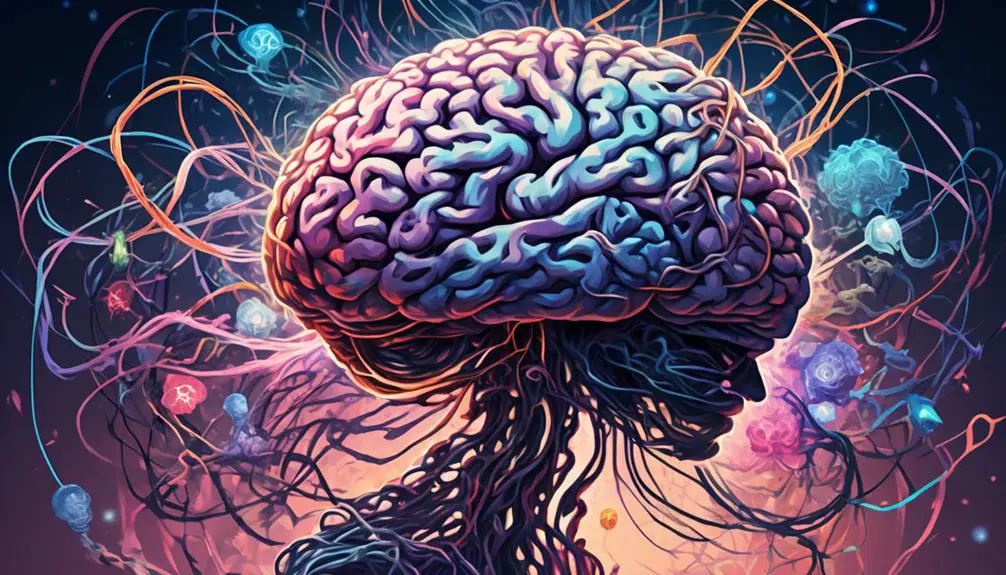
Delving into the realm of psychological theories, it's crucial for you to understand that the development and persistence of phobias can be significantly influenced by cognitive and behavioral factors. A key theory in this context is Fear Conditioning, a learning process that pairs an aversive stimulus with a situation, causing the situation itself to induce fear. This can lead to the development of phobias, where a particular situation or object becomes intrinsically linked with terror in the mind of the individual.
Phobia Reinforcement is another pivotal psychological theory. Essentially, this suggests that avoidance behavior, or actions taken to prevent encountering the fear-inducing stimulus, serves to reinforce the phobia. Here's how it works: you have a phobia, so you avoid the situation or object that triggers your fear. This avoidance reduces your anxiety, providing immediate relief, which in turn reinforces the phobia because it rewards the avoidance behavior.
Now, it's important to note that these theories don't operate in isolation. Often, they interact and intertwine, creating a complex web of fear and avoidance that can be difficult to disentangle. Fear Conditioning may initiate the phobia, but Phobia Reinforcement often perpetuates it. Understanding this interplay can equip you with valuable insights into the psychological underpinnings of phobias, aiding in the development of more effective treatment strategies.
Role of Childhood Trauma in Phobias

Shifting our focus, it's critical to examine how childhood trauma can play a significant role in the formation of phobias, shaping an individual's fear responses from an early age. Experiences of trauma in childhood can often result in a heightened sense of fear and anxiety, which can further develop into phobias in adulthood.
Trauma coping mechanisms are crucial in this context. When faced with traumatic events, children often employ coping strategies that may inadvertently reinforce their fears. For example, a child who's experienced a traumatic event involving dogs may develop a coping mechanism of avoidance. This avoidance, while protecting the child in the short-term, can cement the fear response, leading to a phobia of dogs in the long-term.
Furthermore, the resilience development of a child significantly impacts the formation of phobias. Resilience, or the ability to recover and adapt after traumatic events, varies greatly among individuals. In children with strong resilience, the likelihood of developing a phobia is reduced, as they're able to manage their fear responses more effectively.
However, in children with less developed resilience, the fear response to a traumatic event may become a deeply ingrained phobia. This shows the intricate connection between childhood trauma, coping mechanisms, and resilience development in the formation of phobias.
Genetic Influences on Phobias

While childhood trauma certainly plays a role in phobia development, it's equally important to consider the impact of genetic influences. You've likely heard the saying, 'Genetics loads the gun, environment pulls the trigger.' This refers to the delicate interplay between our inherited traits and the experiences we encounter in life.
When discussing phobias, this concept remains relevant. Phobia inheritance patterns suggest that if a close relative has a phobia, you're more likely to develop the same or a similar fear. The genetic component of phobias has been studied extensively, with twin studies in phobias providing some of the most compelling evidence.
Twin studies in phobias compare identical twins (who share 100% of their genes) and fraternal twins (who share 50% of their genes). Researchers have found that if one identical twin has a specific phobia, the other is significantly more likely to have it too, compared to fraternal twins. This indicates a clear genetic link.
However, it's important to understand that genetics isn't the sole determinant. Environmental factors and personal experiences also play a crucial role. For instance, a person might inherit a predisposition for anxiety, but without certain triggers, they may never develop a phobia.
Neurobiological Underpinnings of Phobias
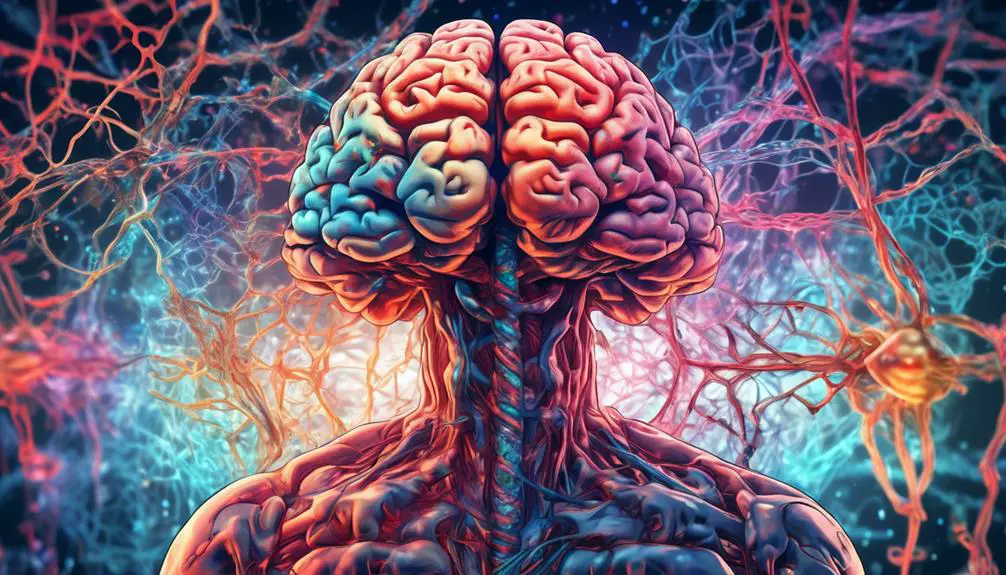
Now, let's explore the neurobiological underpinnings of phobias, diving into the intricate ways our brains and bodies respond to fear. A key aspect to understand is phobic conditioning, the process through which a fear response is developed. When you encounter a specific stimulus that triggers fear, your brain links that stimulus to the fear response. This link becomes stronger with every encounter, solidifying the phobia.
Your amygdala, a small almond-shaped structure deep inside your brain, is the primary player here. It's like a fear command center, sounding the alarm when it perceives a threat. When your amygdala's wires get crossed, it can misinterpret harmless stimuli as threats, leading to an irrational fear or phobia.
So, what's the antidote? Enter fear extinction. This is the process of retraining the brain to dissociate a specific stimulus from the fear response. It's like hitting the reset button on your amygdala, teaching it that the feared object or situation isn't actually dangerous. This is typically achieved through exposure therapy, where you're gradually exposed to the fear stimulus in a safe environment until the fear response diminishes.
However, fear extinction doesn't always work. Why? It's due to the complex interplay between your genes, brain structures and environmental factors. For instance, high stress levels or a history of trauma can make your brain more resistant to fear extinction.
Interaction Between Psychological and Biological Factors

Understanding the intricate workings of your brain's fear response provides a foundation to examine the interplay between psychological and biological factors in phobias. This interaction is a complex process where fear conditioning and phobia acquisition play significant roles.
Fear conditioning, a form of associative learning, is a biological process where your brain connects a previously neutral stimulus with a frightening one, causing you to react with fear when you encounter the neutral stimulus alone. For example, if you've had a traumatic experience with a dog, your brain could associate dogs with fear, leading to a phobia.
On the other hand, phobia acquisition is a psychological process that involves your cognition and emotions. It's not just about the presence of fear but also your interpretation and emotional response to the fear. For instance, if you've developed a fear of dogs, your psychological response might include avoiding parks where dogs are likely to be present, which in turn reinforces your fear.
The interplay between these biological and psychological processes is key to understanding phobias. The fear conditioning triggers the initial fear response, while your cognitive interpretation and emotional response drive the phobia acquisition. This dynamic interaction creates a cycle that can make phobias persistent and difficult to overcome.
However, understanding this interaction is also crucial in treating phobias. Cognitive-behavioral therapy, for example, targets both your fear response and your interpretation of fear, breaking the cycle and helping you manage your phobia. By understanding the interaction between your brain and your mind, you're better equipped to face your fears.
Current Treatments and Therapies for Phobias
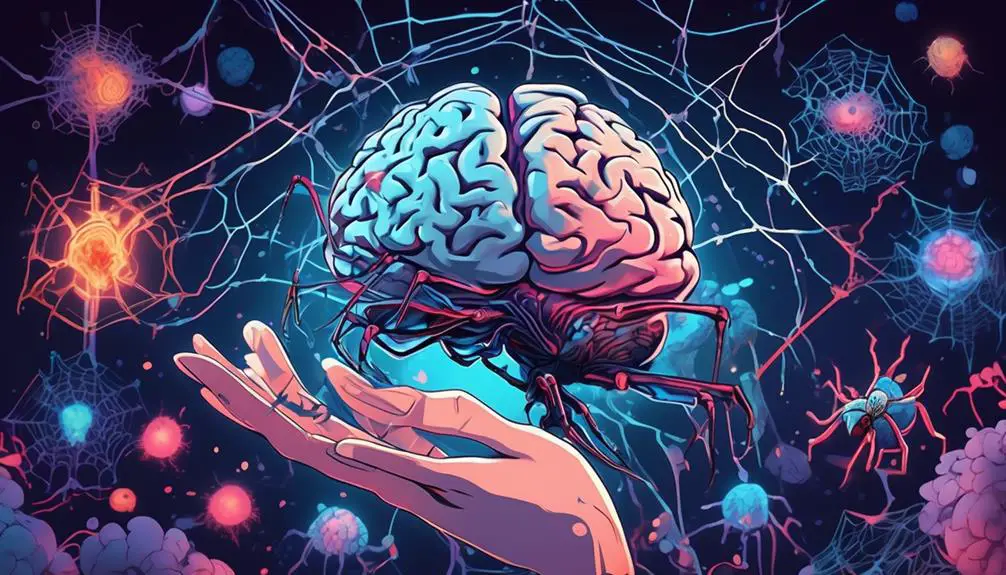
In the realm of phobia treatment, a wide range of therapeutic approaches are currently employed, each designed to tackle the complex interplay of psychological and biological factors that underpin these intense fears.
One innovative technique that's gaining traction is Virtual Reality Exposure (VRE). In this treatment, you're immersed in a virtual environment that replicates your phobic situation. This facilitates a controlled exposure to the feared stimuli, allowing you to confront and gradually become desensitized to your fear in a safe, controlled setting.
Phobia Desensitization, also known as systematic desensitization, is another common method. This technique combines relaxation techniques with gradual exposure to the feared object or situation, helping you to replace the fear response with a relaxation response. Over time, this can result in a significant reduction or even elimination of the phobia.
Cognitive Behavioural Therapy (CBT) is a further key treatment. Here, the focus is on identifying and challenging the irrational thoughts and beliefs that contribute to your fear, helping you to develop healthier and more realistic perspectives.
Medication is also used, typically as a complementary strategy to these therapies. Antidepressants, beta-blockers, and sedatives can help manage the physical symptoms of phobias, making it easier for you to engage in exposure therapy.
It's important to note that the effectiveness of these treatments varies from person to person. Factors such as the severity of the phobia, the individual's commitment to treatment, and the skill of the therapist can all influence outcomes. Therefore, it's crucial to approach treatment with patience and persistence, and to seek professional advice when deciding on the best course of therapy.
Conclusion
In understanding phobias, it's clear both psychological and biological factors intertwine. Childhood trauma, genetics, and neurobiology all play a role in phobia development. Yet, it's the interaction of these elements that truly shapes your phobia.
Thankfully, current treatments offer hope. From cognitive-behavioral therapy to medication, you're not alone in your journey.
Exploring this complex interplay between mind and body, we can better comprehend and treat phobias, making them less daunting.

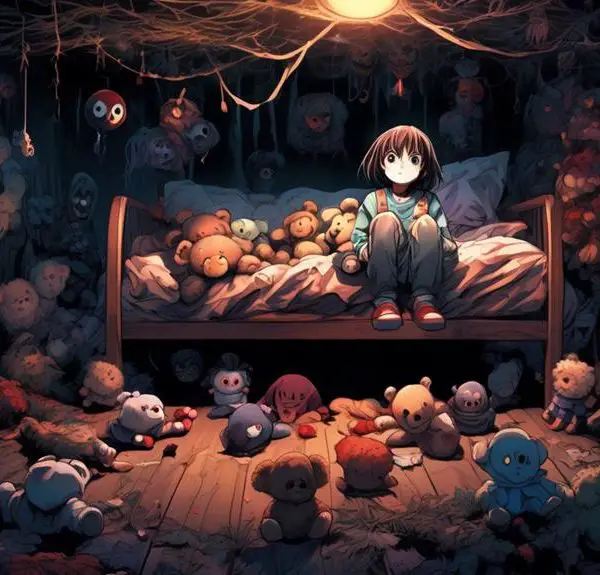

Sign up